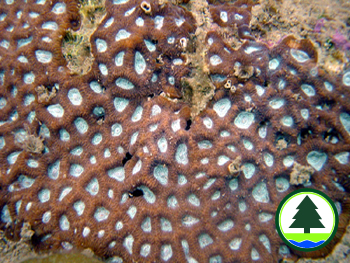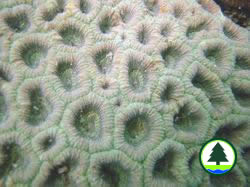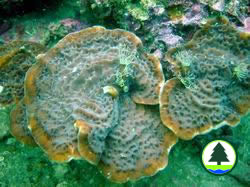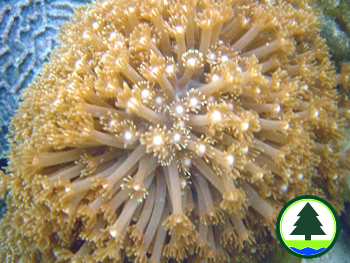Coral Field Guide
|
What is the distribution of Coral Communities in Hong Kong? Do you know the distribution of Coral Communities in Hong Kong?
Coral reef is one of the most complex and highly productive marine ecosystems in the world. It supports a high diversity of marine organisms ranging from unicellular protozoan to large animals like sharks, other fishes and invertebrates as well as large marine plants like algae. Its high productivity is comparable to that of a tropical rain forest.
The calcium carbonate foundation of the reef system is built up by the biological activities of reef building corals and coralline algae over thousands of years. These corals have specific requirements for growth and are sensitive to changes in the physical environmental conditions.
They grow optimally in warm (temperature around 25-28oC) and truly marine (salinity of 32-35ppt) water with moderate wave action and free from heavy sedimentation. They also require light for the photosynthetic activities of the symbiotic algae living inside their bodies. This being the case, reef systems are therefore mainly found in tropical coastal shores away from the influence of major river run off.
Hong Kong is located in the subtropical region. Due to the influence of Pearl River to the west, marine water around Hong Kong, especially along the western shore, is very turbid and has low salinity. Winter water temperature in Hong Kong is around 16oC or can drop to as low as 13oC. Hence, in general, Hong Kong marine environment is not optimal for many coral species to grow. Nonetheless, around 84 species of corals (out of around 800 species world-wide) can be found in Hong Kong waters. They mainly grow along the northeast and eastern shores where the waters are both sheltered and free from the influence of Pearl River. These corals, however, do not form extensive carbonate reef system. Rather, they form communities in shallow coastal waters. Larger patches of these coral communities can be found mainly in the northeastern shores of the New Territories.
Coral cover and species richness are highest in the northeastern region in places like Tung Ping Chau, Kat O, Shelter Island, Chek Chau and Hoi Ha Wan. In these places, corals form more extensive communities and the massive corals, especially those belonging to the family Faviidae like the brain corals (Platygyra spp.) and honey comb corals (Dipsastraea and Favites spp.) are dominant.
Large colonies of other corals, like the plate-like coral (Pavona spp.), bore corals (Porites spp.) or bowl corals (Turbinaria spp.) can also be found in the eastern region, including Sharp Island, Shelter Island, Bluff Island and along the Sai Kung Peninsula. The coral coverage there is also high. However, in these places, corals do not form very large communities. Apart from the massive corals, other branching corals like Acropora spp., plate-like or laminar corals such as Montipora spp. can sometimes predominate.
In the southeastern and southern parts of Hong Kong, including Ninepins, Sung Kong, Waglan, Cape D'Aguilar (Southeastern tip of Hong Kong Island), Lamma Island, Cheung Chau and Lantau Island, both coral cover and species richness are low. Corals do not form extensive bed and are mostly found as isolated heads among rocks and boulders. |
||||
|
||||



